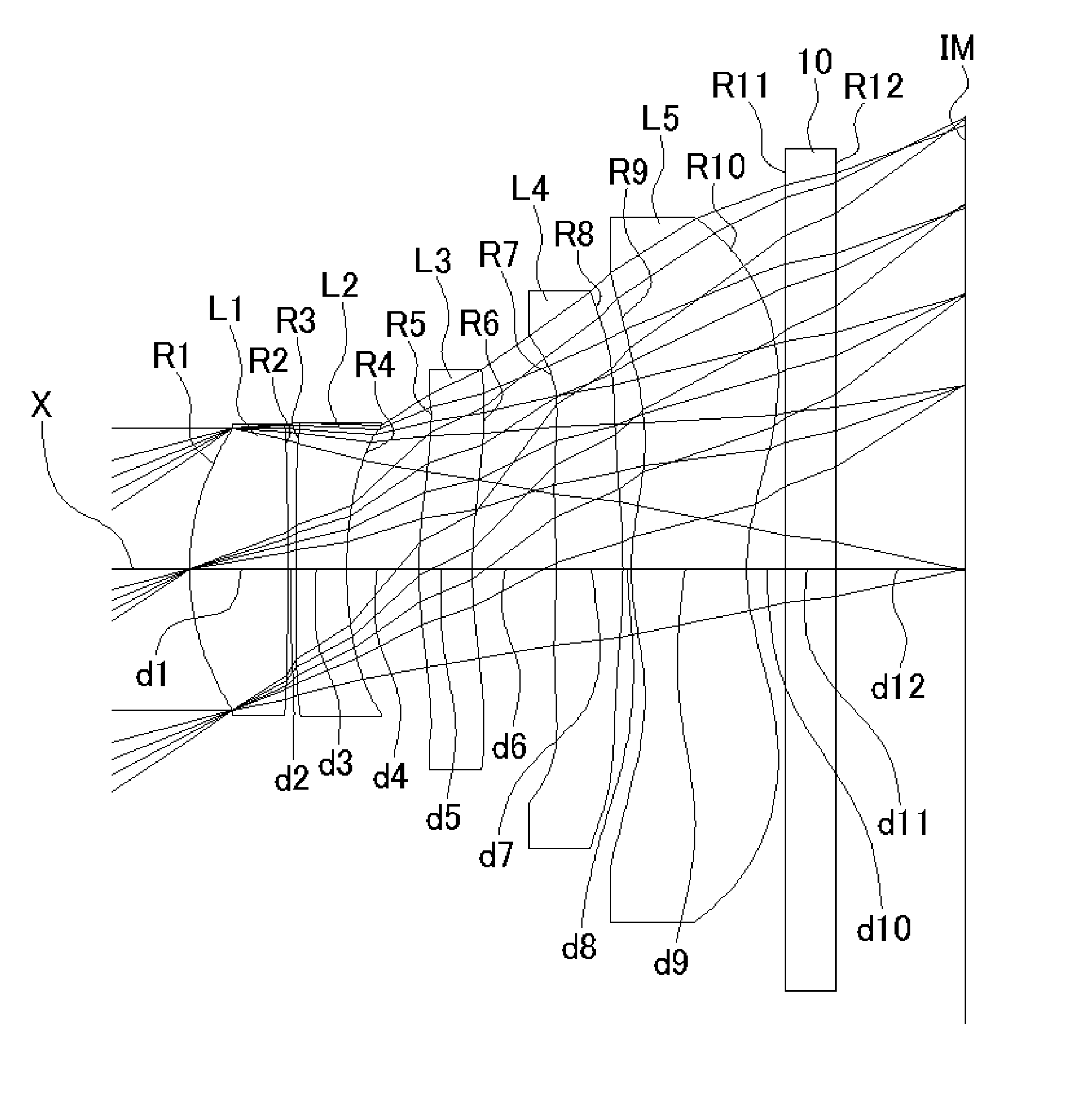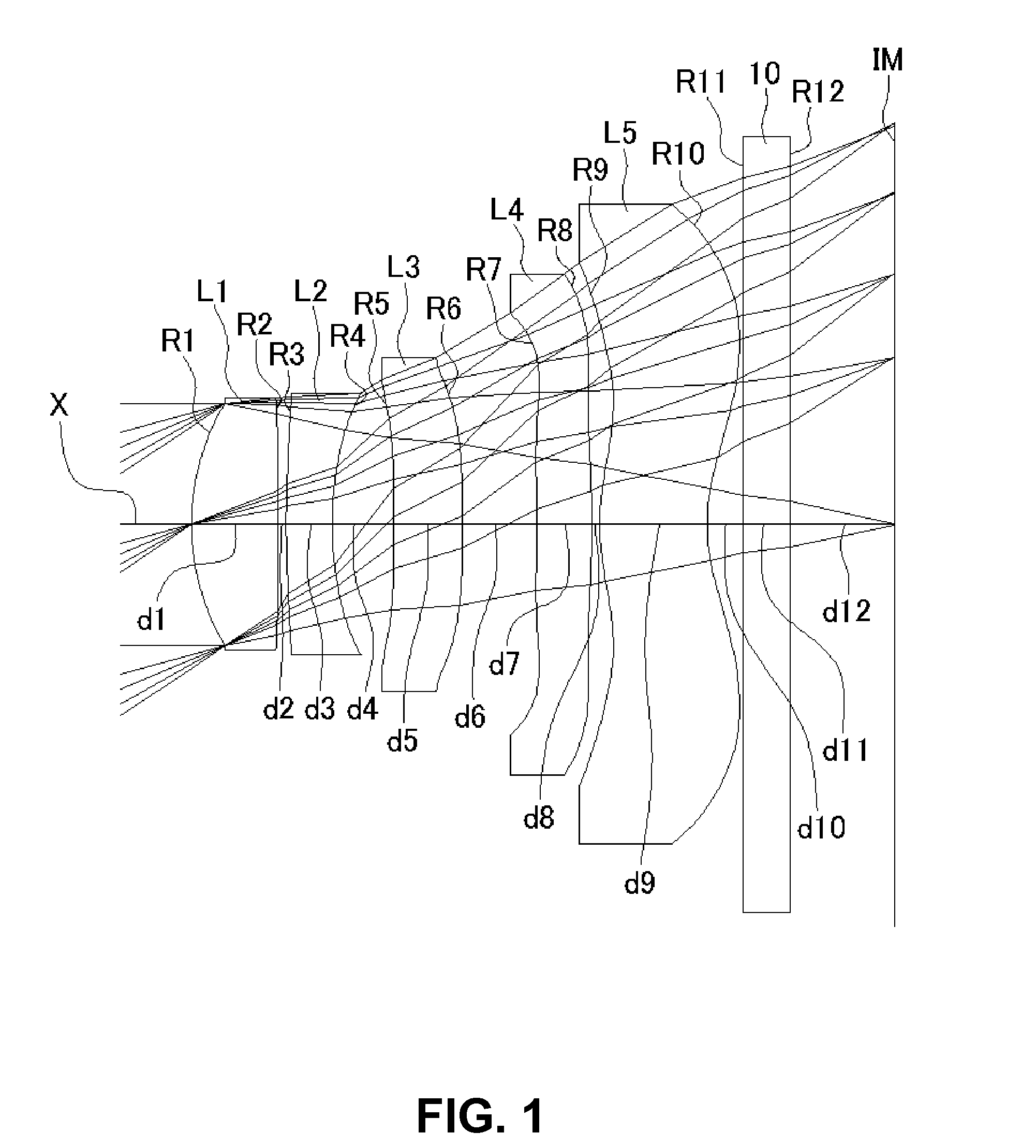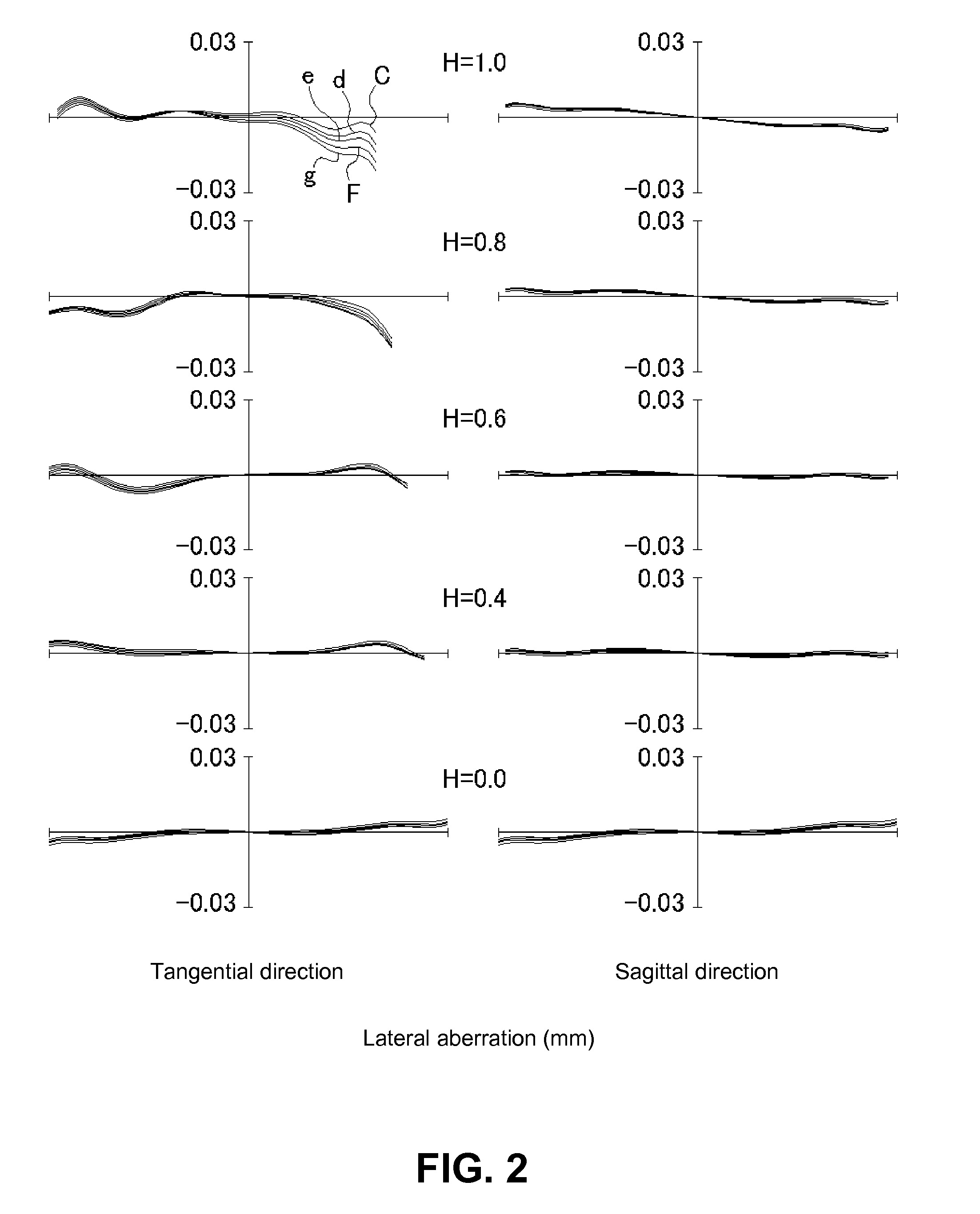Imaging lens
a technology of imaging lens and spherical lens, which is applied in the field of imaging lens, can solve the problems of difficult to meet the optical performance requirements of such a two- or three-lens configuration, difficulty in sufficiently correcting aberration anymore, and limited abbe's number of first and second lenses, so as to achieve satisfactory image-forming performance, small maximum emitting angle of off-axis light beam, and easy shading
- Summary
- Abstract
- Description
- Claims
- Application Information
AI Technical Summary
Benefits of technology
Problems solved by technology
Method used
Image
Examples
Embodiment Construction
[0047]Hereunder, referring to the accompanying drawings, an embodiment of the present invention will be fully described.
[0048]FIGS. 1, 4, 7, 10, and 13 are schematic sectional views of imaging lenses in Numerical Data Examples 1 to 5 according to the embodiment, respectively. Since a basic lens configuration is the same among those Numerical Data Examples, the lens configuration of the embodiment will be described with reference to the schematic sectional view of Numerical Data Example 1.
[0049]As shown in FIG. 1, the imaging lens of the embodiment includes a first lens L1 having positive refractive power, a second lens L2 having negative refractive power, a third lens L3 having positive refractive power, a fourth lens L4 having negative refractive power, and a fifth lens L5 having negative refractive power, arranged in the order from an object side to an image plane side. A filter 10 such as an infrared cut-off filter or a cover glass may be provided between the fifth lens L5 and an...
PUM
 Login to View More
Login to View More Abstract
Description
Claims
Application Information
 Login to View More
Login to View More - R&D
- Intellectual Property
- Life Sciences
- Materials
- Tech Scout
- Unparalleled Data Quality
- Higher Quality Content
- 60% Fewer Hallucinations
Browse by: Latest US Patents, China's latest patents, Technical Efficacy Thesaurus, Application Domain, Technology Topic, Popular Technical Reports.
© 2025 PatSnap. All rights reserved.Legal|Privacy policy|Modern Slavery Act Transparency Statement|Sitemap|About US| Contact US: help@patsnap.com



